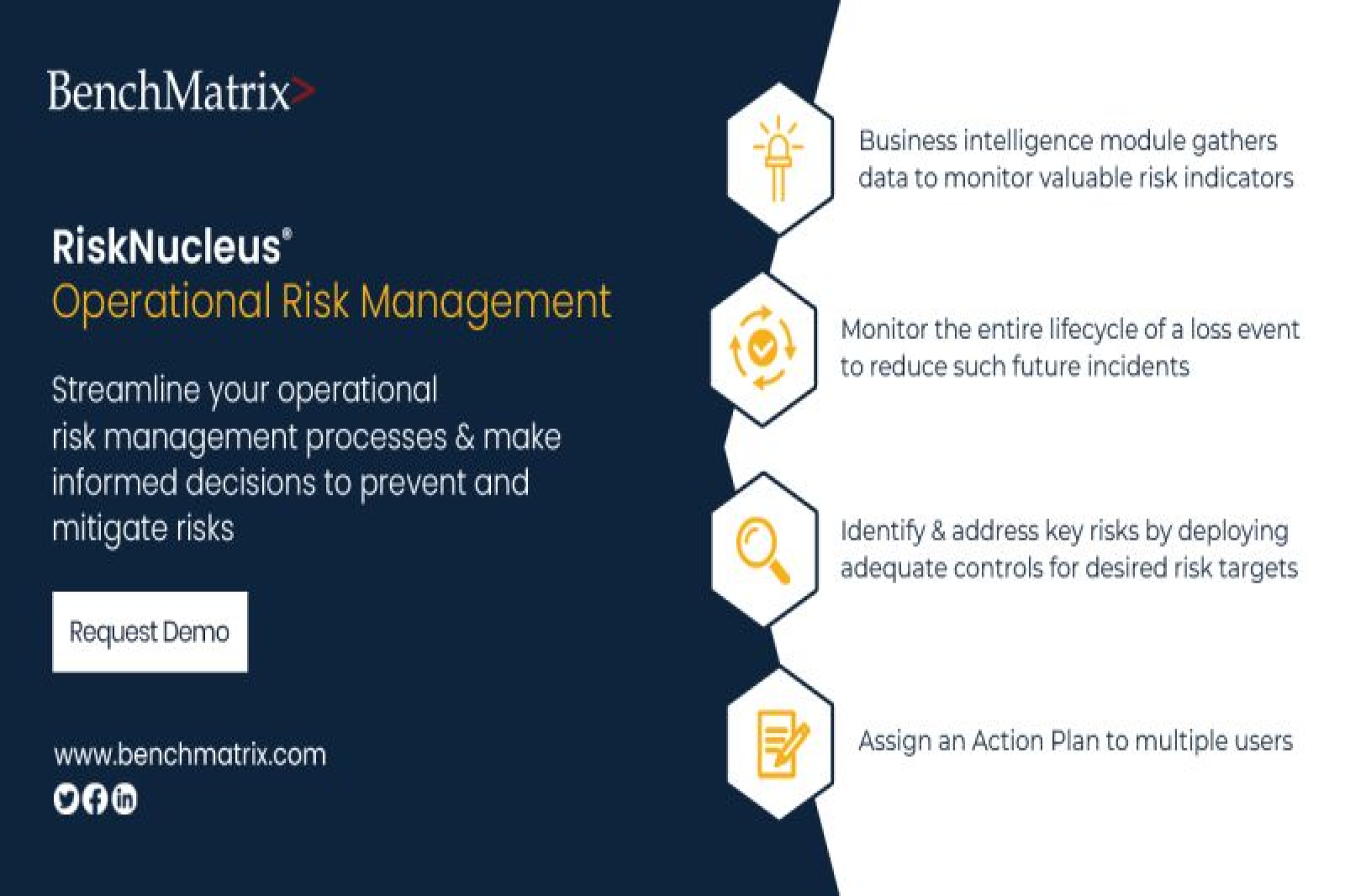L’état de la gestion du risque opérationnel dans les banques marocaines
-
La gestion du risque opérationnel dans les banques marocaines : vers une standardisation des approches de gestion
Le risque opérationnel est défini par le Comité de Bâle comme « le risque de pertes résultant de processus internes inadéquats ou défaillants, de personnes et systèmes, ou d’événements externes» https://www.ir-bankofafrica.ma/sites/default/files/2020-08/Organisation%20de%20la%20gestion%20des%20risques%20-%202019.pdf. Il englobe ainsi les risques liés à la fraude, aux erreurs humaines, aux défaillances techniques, aux catastrophes naturelles, aux changements réglementaires, etc. Le risque opérationnel est considéré comme l'un des principaux risques auxquels sont exposées les banques, et sa gestion est devenue un enjeu stratégique pour la stabilité financière et la rentabilité des établissements bancaires.
Au Maroc, le secteur bancaire a connu ces dernières années une évolution importante, marquée par la diversification des activités, l'innovation technologique, l'internationalisation et la concurrence accrue. Ces facteurs ont augmenté la complexité et la vulnérabilité des banques face au risque opérationnel. Ainsi, les banques marocaines ont dû renforcer leur dispositif de gestion des risques opérationnels, en se conformant aux normes internationales et aux exigences du régulateur national, Bank Al-Maghrib.
Selon une étude menée par Chemlal et al. (2020) http://revue-rimms.org/wp-content/uploads/2020/06/ARTICLE-7-ASMAE-MRABET-2.pdf, les banques marocaines cotées en bourse ont adopté une approche globale et intégrée de la gestion des risques opérationnels, basée sur les étapes suivantes :
- L'identification des risques opérationnels à travers l'analyse des processus métiers, des incidents passés et des scénarios potentiels.
- L'évaluation des risques opérationnels à l'aide d'indicateurs quantitatifs (pertes effectives, pertes attendues, capital économique) et qualitatifs (cartographie des risques, auto-évaluation des risques).
- La maîtrise des risques opérationnels par la mise en place de mesures préventives (contrôles internes, procédures, formation) et correctives (plans d'action, assurance, transfert).
- Le suivi des risques opérationnels par le reporting régulier des indicateurs de risque, l'audit interne et externe, et le contrôle permanent.
- La gouvernance des risques opérationnels par l'implication du conseil d'administration, du comité de direction générale, du comité de pilotage et gestion des risques, et de la direction générale en charge des risques groupe.
L'étude a également montré que la gestion des risques opérationnels a un impact positif sur la performance financière des banques marocaines cotées en bourse. En effet, les auteurs ont trouvé une corrélation significative entre les indicateurs de performance financière (produit net bancaire, résultat net d'exploitation, coefficient d'exploitation, rentabilité des capitaux propres et rentabilité des actifs) et les variables liées à la gestion des risques opérationnels (capital réglementaire alloué au risque opérationnel, nombre d'incidents déclarés, nombre de contrôles effectués).
Par ailleurs, une autre étude réalisée par El Khattabi (2018) https://www.researchgate.net/publication/371304923_La_gestion_du_risque_operationnel_au_sein_des_banques_marocaines_vers_une_standardisation_des_approches_de_gestion a analysé les pratiques de gestion du risque opérationnel au sein de six banques marocaines (Attijariwafa Bank, BMCE Bank of Africa, Banque Centrale Populaire, Crédit Agricole du Maroc, Crédit du Maroc et Société Générale Maroc). L'auteur a constaté que les banques marocaines ont adopté des approches de gestion du risque opérationnel similaires, basées sur les recommandations du Comité de Bâle et les directives de Bank Al-Maghrib. Il a également relevé que les banques marocaines utilisent principalement l'approche standardisée pour calculer le capital réglementaire requis pour couvrir le risque opérationnel. Cette approche consiste à appliquer un coefficient fixe aux produits nets bancaires par ligne d'activité. L'auteur a souligné que cette approche présente des limites, car elle ne reflète pas la réalité du risque opérationnel et ne tient pas compte de la diversité des profils de risque des banques. Il a donc suggéré que les banques marocaines évoluent vers des approches plus avancées, basées sur des modèles internes qui prennent en compte les spécificités de chaque banque.
En conclusion, on peut dire que la gestion du risque opérationnel dans les banques marocaines a connu une amélioration significative, grâce à la mise en place d'un dispositif de gestion global et intégré, conforme aux normes internationales et aux exigences du régulateur national. Cette gestion a permis aux banques marocaines de renforcer leur résilience face aux événements imprévus, et d'améliorer leur performance financière. Toutefois, il reste encore des marges de progression, notamment en matière de calcul du capital réglementaire, qui pourrait être affiné par l'utilisation d'approches plus avancées et adaptées à chaque banque.
-
Quel est le niveau d'exposition aux de Risques Opérationnels des Banques Marocaine
Il n'existe pas de classement officiel des banques marocaines selon leur niveau de risque opérationnel. Toutefois, on peut essayer d'apprécier ce risque à partir de certains indicateurs financiers, tels que le capital réglementaire alloué au risque opérationnel, le nombre d'incidents déclarés, le nombre de contrôles effectués, ou encore le ratio de couverture du risque opérationnel.
Selon les données publiées par Bank Al-Maghrib https://www.bkam.ma/A-propos/Gouvernance/Gestion-des-risques-et-continuite-d-activites, le capital réglementaire alloué au risque opérationnel par les banques marocaines s'élevait à 13,9 milliards de dirhams à fin 2020, soit 11,6% du capital réglementaire total. Ce montant varie selon les banques, en fonction de leur taille, de leur activité et de la méthode de calcul utilisée. Les banques marocaines utilisent principalement l'approche standardisée, qui consiste à appliquer un coefficient fixe aux produits nets bancaires par ligne d'activité.
Selon les rapports annuels des banques marocaines cotées en bourse https://www.bkam.ma/Stabilite-financiere/Cadre-analytique/Cartographie-des-risques-systemiques, le capital réglementaire alloué au risque opérationnel se répartissait comme suit en 2020 :
- Attijariwafa Bank : 4,3 milliards de dirhams, soit 12,5% du capital réglementaire total.
- BMCE Bank of Africa : 2,8 milliards de dirhams, soit 10,9% du capital réglementaire total.
- Banque Centrale Populaire : 2,6 milliards de dirhams, soit 10,7% du capital réglementaire total.
- Crédit du Maroc : 1 milliard de dirhams, soit 14% du capital réglementaire total.
- Société Générale Marocaine de Banques : 0,9 milliard de dirhams, soit 9% du capital réglementaire total.
- Crédit Agricole du Maroc : 0,8 milliard de dirhams, soit 9,4% du capital réglementaire total.
Ces chiffres ne reflètent pas nécessairement le niveau réel du risque opérationnel dans chaque banque, car ils dépendent aussi des produits nets bancaires et des coefficients appliqués. Il faudrait donc les compléter par d'autres indicateurs qualitatifs, tels que le nombre et la nature des incidents déclarés, le nombre et la fréquence des contrôles effectués, ou encore le ratio de couverture du risque opérationnel. Ce ratio mesure la capacité d'une banque à absorber les pertes liées au risque opérationnel à partir de ses fonds propres. Il se calcule en divisant les fonds propres par le capital réglementaire alloué au risque opérationnel.
Malheureusement, ces indicateurs ne sont pas toujours disponibles ou comparables entre les banques. Il faudrait donc se référer aux rapports d'audit interne et externe, aux rapports du régulateur ou aux études spécialisées pour avoir une vision plus précise du risque opérationnel dans les banques marocaines.
Références : https://www.ir-bankofafrica.ma/sites/default/files/2020-08/Organisation%20de%20la%20gestion%20des%20risques%20-%202019.pdf: Comité de Bâle sur le contrôle bancaire (2006). Principes fondamentaux pour un contrôle bancaire efficace. [1] http://revue-rimms.org/wp-content/uploads/2020/06/ARTICLE-7-ASMAE-MRABET-2.pdf: Chemlal, M., Benazzou, L., Mrabet, A., & Gharib, B. (2020). L’impact de la gestion des risques opérationnels sur la performance financière des banques marocaines cotées en bourse. Revue Internationale du Marketing et Management Stratégique (RIMMS), 1(2), 101-120. [2] https://www.researchgate.net/publication/371304923_La_gestion_du_risque_operationnel_au_sein_des_banques_marocaines_vers_une_standardisation_des_approches_de_gestion: El Khattabi, A. (2018). La gestion du risque opérationnel au sein des banques marocaines : vers une standardisation des approches de gestion. Thèse de doctorat, Université Mohammed V de Rabat. [3]






POST COMMENT
COMMENTS(0)
No Comment yet. Be the first :)